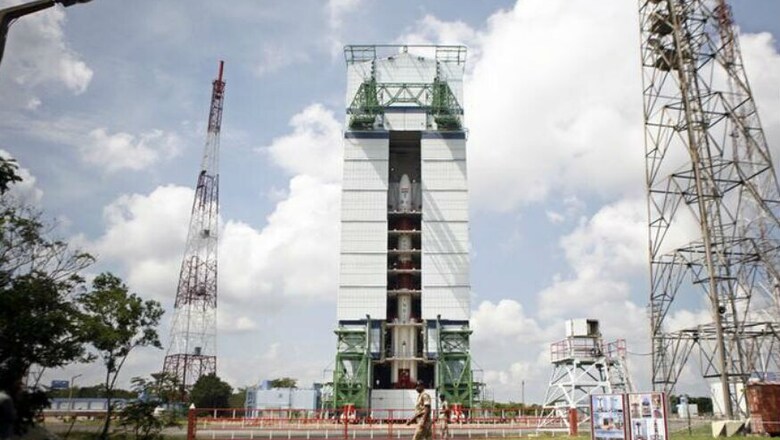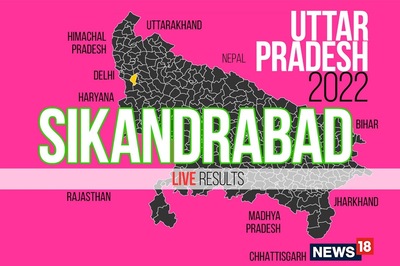
views
The traditional phrase ‘space race’ was associated with two countries USA and Russia but today as the global power axis shifts from Asia Pacific to Indo-Pacific, countries like India, China, Japan, Singapore, Vietnam etc are leading the regions innovation development strategy using space exploration as a strategic medium.
Asia in particular is looking at space exploration today as a medium of foreign policy and for developmental purposes.
“Space exploration is no more a domain controlled by the US or Russia, today more than 60 players are involved. There are several public and private players in Asia, Africa and Latin America who are coming forward to tap into the potential of space, be it for developmental purposes, socio-economic purposes, or for tele-education, tele-medecine or even for strategically for military purposes,” said Rajeshwari Pillai Rajagopalan, Senior Fellow and Head, Nuclear and Space Policy for Observer Research Foundation.
However what is uncertain though is if one of these countries in Asia will turn up to win the ultimate space race, but leaders are steering their respective country’s scientific technological strength with space exploration as an important catalyst. Of the ten countries that have independently successfully launched a satellite into orbit, six are Asian: China, India, Iran, Israel, Japan and North Korea.
Two years after launching the Mars orbiter mission in its first attempt, India’s space agency, the Indian Space Research Organisation (ISRO), launched as many as 34 satellites into space in 2016; these included 22 foreign satellites and 12 Indian ones.
In February 2017, Indian Space Research Organisation will launch 103 satellites using its workhorse PSLV-C37, while Prime Minister Narendra Modi’s pet project the SAARC satellite also known as the South Asian satellite will be also be launched soon by ISRO.
“Countries like Israel or Singapore prefer India to others as an ideal launch pad for their satellites as it is affordable. A launch from India costs around $100mn or $200mn as compared to a launch from France or USA, which is expensive today.” says Prof. Srikanth Kondapalli, Professor of Chinese Studies, Jawaharlal Nehru University, Delhi.
In addition to its Mars mission, India has launched the Chandrayaan I in 2008-09, has a planned Chandrayaan II rover mission and plans are afloat for an eventual independent human spaceflight program. India has also created the Integrated Space Cell (ISC) which is aimed at handling operational control of selected observation and communication satellites to each of its military branches.
The Integrated Space Cell is currently operated jointly by the three service arms, the DRDO, and the ISRO, making it more of a central information network system.
India’s ISC may be the stepping stone to a fully fledged Indian Military Space Command in the near future.
“In October 2014, the Government of India took a decision to instate the country’s first defence space agency, an interim body. It is decisions like these that points to the fact that there are meaningful but small steps being taken on the ground to develop military characteristics in the field of space," opines Rajeshwari Pillai.
Prof. Srikanth Kondapalli feels that India has always seen space for civilian and developmental means but China’s actions have prompted it to take counter measures especially to develop its own military architecture in the field of space.
“In 2009, China conducted its anti satellite test, that in a sense rattled the DRDO. At that time we had just one military satellite. If you take USA, out of their 100 satellites, they have 40 satellites looking over China. If the Chinese follow their age old theory of beating up “US and its allies”, then India has to stand guard and build capabilities,” he said.
True to this, China has been aggressive to ramp up space exploration. In the last 5 years, China has already signed 43 space co-operation agreements or memorandums of understanding with nearly 30 countries, space agencies and international organizations.
China has also recently released an official white paper on its space mission stating that it will launch a lunar probe in 2018 to achieve world’s first soft landing on the far side of the moon and mission to Mars in the same year.
China conducted 22 launch missions in 2016 and 19 in 2015; it is set to launch a record 30 missions in 2017.
In years to come, China also plans to provide countries associated with the Belt and Road initiative with facilities of satellite communications, navigation and weather forecasting analysis.
Prof. Srikanth also feels that India and China also have a lot to collaborate in the field of space.
“India and China have a Memorandum of Understanding (MoU) in the field of space. Chinese and Indian Space programmes are identitical, the structure and talent is the same. I have been witness to a lot of discussions between Chinese and Indian scientists, they are friendly and the bonhomie is evident. The focus of these interactions remain how best to use space to contribute and solve social issues,” he added.
Ajay Lele, Senior Fellow, IDSA feels that China is using space as a tool of nationalism.
“China wants to use space as a tool of nationalism and seeks to be seen as a spearhead of technological leadership. One must understand that space is thoughtfully chosen by China, they are engaging with countries in Africa. Recently a Nigerian satellite sought help and was replaced by China. China is leaving no stone unturned to tap into these mineral rich African countries,” he added.
Japan is not lagging behind either, the country is working on the go-getting Hayabusa 2 mission, which aims to put four landers on an asteroid by 2018 and then return soil samples to earth.
It is widely reported that Japanese officials see an intimate connection between their space accomplishments and the ability of its economy to export advanced technologies.
Japan has also come forward to support Australia, to whom it has provided $1 billion of support toward construction of a national space centre and the purchase of two Japanese Earth observation satellites, whose data may be shared by the two countries.
Australia also has Memorandum of Understanding with the Indian Space Research Organisation and the Indian Institute of Science in the field of space.
In October 2016, the Strait Times came out with an editorial affirming Singapore’s interest in the field of space, ‘Singapore well placed for satellite launching business’, it further elaborated, “Space exploration has been identified as the next frontier. A corollary of this is the satellite-launching industry, which is worth billions of dollars. The spin-off is thousands of high-skill jobs. Skills are readily available and accessible, but not many countries have an ecosystem of world-class universities, top-notch researchers, high-tech industries and a First World economy such as ours. Herein lays our comparative advantage. Being near the equator also makes Singapore an ideal location for a space port," it noted.
While countries like India are looking at tapping into space for developmental purposes. Other South Asian countries are looking to expand their space potential looking at China’s rise and a possible threat of force and the South China Sea dispute.
“What China says at international platforms and what it does on ground are diametrically opposite. That is precisely why you have countries like Vietnam, who have begun to lay emphasis on space and build their own architecture.” said Rajeshwari Pillai Rajagopal.
With the narrative and the focus shifting to Indo-Pacific region, interesting proposals such as the South Asian satellite and a dedicated BRICS satellite are also in the offing. What will be interesting to observe though will be how the Asian powers will stay relevant in the Indo-Pacific Space Race and also how these powers will use the potential of space to enhance communication, remove poverty and a host of other social evils that plague the society today.
(The author is an alumnus of the Asian College of Journalism and is currently the Deputy Director at India Foundation – a New Delhi-based think tank. Views expressed by the author are strictly personal)




















Comments
0 comment